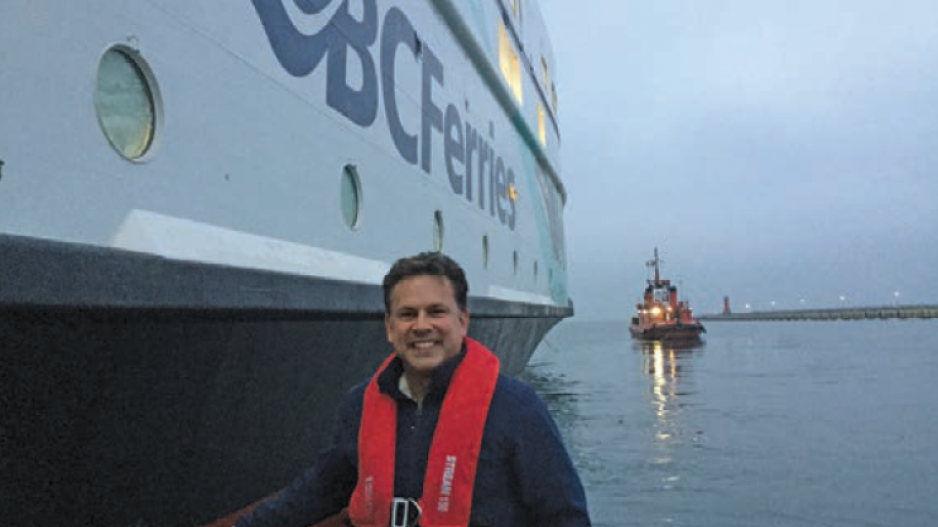BC Ferries launched its third liquefied natural gas (LNG) fuelled vessel earlier this month and plans to switch more vessels in its fleet to the cleaner fuel.
The Salish Raven replaces the Queen of Nanaimo and will service the Tsawwassen-Southern Gulf Islands route. It and BC Ferries’ other LNG vessels, the Salish Eagle and Salish Orca, were refitted in Poland to burn LNG, which cuts sulphur and nitrogen oxides and carbon emissions significantly. LNG costs about 40% less than BC Ferries’ traditional fuel, ultra-low-sulphur marine diesel, which is supplied by Chevron (NYSE:CVX).
Mark Wilson, vice-president of engineering at BC Ferries, said the former provincial Crown corporation had been using a biodiesel blend in its marine diesel for the past six years as its first alternative fuel. But he believes LNG provides more benefits: “It provides a greener and a better environmental solution.”
BC Ferries’ LNG supplier is FortisBC, which operates the only two LNG production facilities on B.C.’s west coast: one in Tilbury, Delta and the other in Mount Hayes near Duncan. Fortis has been working with natural gas since 1971.
FortisBC’s per-litre price for LNG is roughly $0.30; the per-litre price for the low-sulphur marine diesel that BC Ferries traditionally uses is about $0.65.
Besides environmental benefits and cost-effectiveness, LNG also provides local benefits, said Sarah Smith, director of natural gas for transportation at FortisBC.
“The vast majority of the natural gas that we consume in British Columbia comes from northeastern B.C. There’s a net economic benefit to the province.”
BC Ferries switched to LNG when it was time to renew some of its vessels.
“You need a different type of engine and configuration to run on LNG,” said Wilson. “So, naturally, the point of your ability to switch on that is when you need to renew ships. LNG has been around for a long time, but it’s not until the last five to 10 years that it’s been proven in the marine transportation sector.”
The refitted vessels have dual-fuel engines that can run on LNG or marine diesel.
BC Ferries isn’t the first marine company to switch from traditional marine diesel to LNG.
As the price of LNG becomes more competitive and as its value as a cleaner fuel grows, cargo ships and ferries are also making the switch.
Wilson expects the use of LNG will potentially save BC Ferries approximately $10 million a year out of its operating budget and in fuel-cost savings by the time its additional vessels, the Spirit of Vancouver and Spirit of British Columbia, are refitted to accommodate LNG over the next two winters.
“As we move through our fleet-renewal program we’re going to continue to look at LNG for any new vessels that we build down the road,” he said.
Smith hopes that FortisBC continues to be a part of the future of BC Ferries in the changes implemented to future vessels.
“We’d be very excited to continue and grow our partnership with BC Ferries,” she said.
As for strengthening BC Ferries’ positive environmental footprint, it doesn’t stop at alternative fuels. According to Wilson, BC Ferries has big plans to reduce its carbon footprint beyond the use of LNG.
“We’re interested in electric and battery technology for an even further environmental benefit down the road,” he said. “If you’re charging them off the grid, and the power source is coming from a power generation that’s coming from water dams, then you truly do become carbon neutral.” •




